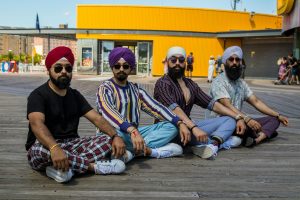Hyperlocal fashion brands match regional style preferences
Fashion has always been a reflection of culture and individuality, evolving with every generation and geographical region. With the rise of e-commerce and social media, fashion has become more accessible and diverse, giving birth to hyperlocal fashion brands. These brands take inspiration from the unique style preferences of different regions, catering to the fashion needs of their local consumers. In this article, we will explore how hyperlocal fashion brands have successfully matched regional style preferences and transformed the fashion industry.
The Rise of Hyperlocal Fashion Brands
The term ‘hyperlocal’ refers to businesses or products that operate within a specific local community, catering to their needs and preferences. In the fashion world, hyperlocal brands are those that draw inspiration from the local culture, traditions, and trends. These brands aim to create a sense of uniqueness and exclusivity, connecting with their target audience on a personal level.
One of the main reasons for the rise of hyperlocal fashion brands is the need for individuality and self-expression. In a fast-paced world dominated by international fashion giants, consumers are increasingly looking for something different, something that resonates with their culture and background. Hyperlocal brands provide just that, making the consumer feel like their fashion choices are a part of their cultural identity.
Matching Regional Style Preferences
Each region has its own distinct fashion preferences, influenced by factors such as climate, geography, and cultural and religious beliefs. Hyperlocal brands have perfected the art of understanding and incorporating these preferences into their designs. For example, a brand based in a tropical region may focus more on lightweight and breathable fabrics, while a brand in a colder region may focus on warm, layering pieces.
Not just the weather, but hyperlocal brands also take into account the cultural and religious needs of the region. For instance, brands in the Middle East may design modest and conservative clothing, while brands in Western countries may focus more on bold and daring styles. By respecting and incorporating these preferences, hyperlocal fashion brands create a deeper connection with their consumers and establish a loyal customer base.
Case Study: African Inspired Fashion
Africa is a diverse continent with a rich cultural heritage, reflected in its fashion. In recent years, there has been a surge of hyperlocal fashion brands embracing African influences in their designs. These brands not only cater to the local market but also appeal to international consumers looking for something unique and authentic.
One such brand is ‘MaXhosa Africa’, founded by South African designer Laduma Ngxokolo. The brand draws inspiration from traditional Xhosa patterns and colors, creating contemporary knitwear pieces. With the use of high-quality materials and meticulous attention to detail, MaXhosa Africa has gained popularity not only in Africa but also worldwide.
The Impact on the Fashion Industry
Hyperlocal fashion brands have disrupted the traditional fashion industry. With their focus on diversity, inclusivity, and cultural representation, these brands have forced international fashion giants to rethink their approach. They have also given a platform for local artisans and small businesses to showcase their skills and promote sustainability.
Moreover, the rise of hyperlocal brands has also led to the democratization of fashion. With the advent of social media, these brands have been able to reach a wider audience, breaking the barriers of traditional retail. Consumers now have access to a variety of styles, reflecting the fashion preferences of different regions, at their fingertips.
To Conclude
The world of fashion is ever-evolving, and hyperlocal fashion brands have brought a refreshing change by blending the traditional with the contemporary. By matching regional style preferences, these brands have not only celebrated diversity but also made fashion more personal and meaningful. With their unique approach and cultural understanding, hyperlocal fashion brands have revolutionized the fashion industry and are here to stay.
The key takeaway from this article is that fashion is not just about following trends, but also about representing one’s identity. Hyperlocal fashion brands have successfully tapped into this aspect, creating a more inclusive and diverse fashion landscape. So, the next time you want to express your style in a way that reflects your culture and roots, look no further than these homegrown hyperlocal brands.










